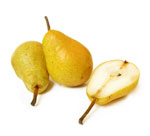Ultrasound-Guided Surgery is best way to Remove Breast Tumours
Posted by: admin on: April 6, 2012
The use of ultrasound-guided surgery to remove tumours from women who have palpable breast cancer is much more successful than standard surgery in excising all the cancerous tissue while sparing as much healthy tissue as possible, according to the results of a randomised controlled trial.
-Team@CMHF
- Researchers told the eighth European Breast Cancer Conference (EBCC-8) that they expect their findings will change surgical practice and ultrasound-guided surgery (USS) should become the norm for excising palpable tumours ie those that can be felt and, at present, are excised “blindly”, without visual aid from tools to help locate the precise position of the tumour during surgery.
- When surgeons opt for breast conserving surgery and remove only the tumour rather than the whole breast, they need to include a margin of cancer-free tissue around the tumour during the surgery.
- This is so that they can be fairly sure that they have removed all the cancerous tissue in order to reduce the chance of local recurrence to a minimum when combined with standard radiotherapy. The margin of “healthy” tissue is analyzed to check that it is free of cancer cells, and if it is not, then further surgery, or an additional radiotherapy boost may be required.
- Dr Nicole Krekel, a PhD student in the department of surgical oncology and resident doctor in plastic and reconstructive surgery at VU University Medical Center in Amsterdam, The Netherlands, told the meeting: “Breast-conserving surgery for palpable breast cancer is generally performed with guidance from surgeon’s palpation only, without help from intra-operative tumour localisation techniques. The standard method of surgery for non-palpable breast cancer involves a wire to identify the area of cancerous tissue that the surgeon needs to remove – a technique known as wire localisation. Unfortunately, both methods of excision are associated with a high rate of margins that contain cancer cells, as well as the excision of excessively large volumes of tissue.
- Despite studies showing the benefits of USS over wire localisation for non-palpable breast cancer, remarkably USS has not been widely integrated into daily surgical practice. In contrast to non-palpable tumours, there has been little research into the use of USS for palpable breast cancer
- Dr Krekel and her colleagues randomized 124 patients with palpable early stage breast cancer to either USS or standard palpation-guided surgery (PGS). They found that among the 61 women in the USS group only 3.3% of the margins contained cancerous cells compared with 16.4% among the 63 women in the PGS group. As a result, USS resulted in a significant reduction in re-excisions, mastectomies and extra radiotherapy. The amount of healthy tissue removed in the USS group was smaller than in the PGS group (40 cubic centimeters versus 58 cc respectively).
- By measuring the volume of the tissue excised during surgery and the actual tumour diameters, the researchers calculated the amount of excess healthy tissue that had been removed, which gave them the “calculated resection ratio” (CRR). A CRR of 1.0 would indicate the ideal amount of tissue had been removed, while a CRR of 2.0 would indicate that double the amount necessary had been removed. They found that the CRR in the USS group was 1.0 (ideal), while in the PGS group it was 1.9.
- USS can prevent the unacceptably high rate of margins containing cancer cells in palpable breast cancer excision, thus avoiding subsequent surgery or radiotherapy. In addition, USS largely reduces the amount of unnecessary healthy breast tissue resection, thereby contributing to the improvement of cosmetic results, said Dr Krekel.
- By using USS, 96.7% of all tumours were excised with adequate, tumour-free margins, compared with only 83.4% in the PGS group, yet the volume of tissue excised was significantly smaller in the USS group.
- Given the overwhelming advantages of ultrasound-guided surgery, ‘blind’, palpation-guided excisions should be completely replaced, with ultrasound-guided surgery becoming the standard of care for both palpable and non-palpable breast cancer surgery.
- The surgeon performing adequate ultrasound will clearly provide better surgical practice.
- Dr Krekel said the reason why USS was superior to PGS was because it enabled surgeons to see all round the tumour while they were performing the operation.
- Intra-operative US enable the surgeon to optimally position the incision on the breast, and to operate under direct vision.
- This provides the surgeon with more precision in localizing tumours and determining the size of the lesions than palpation alone, and allows intra-operative orientation, and assessment of surgical margins.
- It allows complete tumour removal, while continuously monitoring the maintenance of adequate, small resection margins without unnecessarily sacrificing healthy breast tissue.
- After excision, the completeness of tumour excision can be checked once again with US.
- The technique is non-invasive, simple, safe and effective, and can be easily learned, she explained.
- Professor David Cameron, from the University of Edinburgh (Edinburgh, UK), and chair of EBCC-8 said that the study offers the promise of more successful breast conserving surgery for women with early breast cancer. If the pathologist reports that there is still cancer present at the margin of an excision, usually more surgery is needed: importantly, this study offers a way to reduce the chance of this.
- However, it is a report from only one hospital, and these findings need confirmation from other teams of surgeons before they should become standard practice he added
For further reading log on to
http://medicalxpress.com/news/2012-03-ultrasound-guided-surgery-breast-tumours.html
Search
- drchasrani: Difficult to get such a data, authenticated at that. Try Times of India online library
- rakesh pore: hi, where can i get genuine information about "10 most common drugs sold in india?" i want it for a local project
- nilesh dutta: sir, Plz give detail about MBA Sports Management Thanks and Regards


Leave a Reply